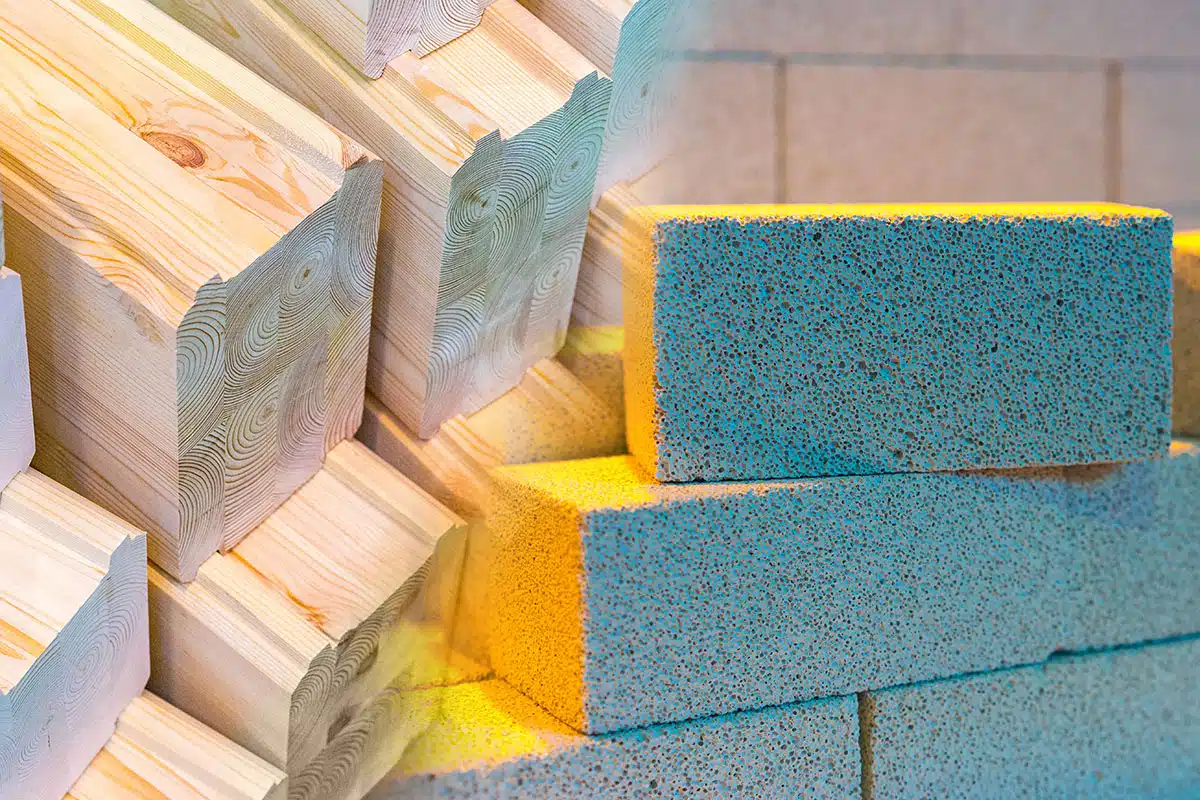The federal government and a growing number of states are seeking ways to combat climate change, leading them to tighten up emissions standards for everything from vehicles to buildings. And in the same way that regulators are hoping to make zero-emission vehicles the norm, net zero buildings are being touted as the next innovation to combat pollution.
Buildings are being targeted because the U.S. Department of Energy (DOE) estimates that they are responsible for more than a third of total U.S. greenhouse gas emissions. In an effort to reduce the size of this carbon footprint, both the federal government and several states have already started crafting regulations to encourage the creation of net zero buildings. The California Energy Efficiency Strategic Plan, for example, calls for all new commercial construction to be net zero by 2030, and for 50% of existing buildings to be retrofitted to net zero building standards by 2030. The federal government recently followed suit, with goals of reducing greenhouse gas emissions from buildings by 65% by 2035 and by 90% by 2050.
A JLL study found that buildings with better sustainability credentials achieved an average capital value premium of more than 20%, as well as higher rents.
The new regulations don’t just affect new construction. Because about 60% of existing buildings will still be in use 50 years from now, many of these structures will need to be retrofitted in order to conform to net zero standards.
The Advantages of Net Zero Buildings
The Department of Energy defines a net zero building as one that reduces its energy usage through a variety of energy-saving features and technologies, while producing enough renewable energy to meet its own needs. Besides potentially large reductions in greenhouse gas emissions, decarbonizing the buildings sector has multiple public benefits, including reducing the size of new power grid infrastructure and enabling clean energy resources like on-site solar panels, battery storage, and EV charging.
And the environment isn’t the only beneficiary of the new standards. Besides helping to reduce carbon emissions, building retrofits can lead to significant advantages for building owners.
One obvious benefit is reduced energy costs. These costs have risen sharply over the past few years, which impacts profitability. For example, a global survey conducted by Sapio Research found that 23% of an industrial company’s annual operating costs are attributable to energy use. And more than half of survey respondents perceived rising energy costs as a moderate or even substantial threat to their profitability.
Net zero buildings provide indirect benefits as well. For example, in a study by global real estate services company JLL, researchers found that buildings with better sustainability credentials achieved an average capital value premium of more than 20%, along with higher rents—signaling an expectation of higher returns and lower risks.
Maximizing the Benefits of Net Zero Buildings
The data show that constructing or retrofitting buildings to meet net zero standards can deliver real benefits. So how can building owners achieve net zero?
To receive the most benefit from retrofitting, owners should take a systemic approach. A recent report from Lawrence Berkeley Laboratories, for example, found that simply upgrading individual building components such as equipment or lighting systems has less potential for whole building energy savings as compared to comprehensive, system-based approaches.
“Systems retrofits hold the potential for much greater savings and are critical to achieving aggressive energy reduction goals in the existing commercial building stock,” the report states.
Creating Net Zero Buildings Through Retrofitting
Fortunately, owners of existing buildings have many different ways to significantly reduce emissions. And as a recent report by the United Kingdom Green Building Council points out, it’s often less expensive to retrofit a quality building than to tear it down and build a new one. That same report also suggests that upgrades don’t all need to be done at once, but should instead be systematically planned and implemented to align with lease and maintenance cycles.
There are a number of steps that should be part of any comprehensive retrofit. Whether you conduct this work in house, or with a facilities maintenance provider who can offer engineering support, here are some steps to consider when crafting a retrofit plan to fit your particular needs.
Energy efficiency audit
Before making any changes, it’s crucial to conduct an energy efficiency audit. This helps identify current energy usage and areas where improvements can be made. The audit should include an assessment of key infrastructure such as heating, ventilation, and air conditioning (HVAC) systems; lighting; insulation; and windows. In many cases, an audit can also provide the technical and financial information (e.g., upfront costs, ongoing costs, projected energy savings, return on investment, etc.) that decision-makers need to evaluate and approve energy efficiency, electrification, and grid interactivity retrofits.
These audits provide decision-makers with the information needed to design comprehensive projects that maximize energy and cost savings. In many buildings, energy costs can be reduced by 20% or more through the identification and implementation of energy conservation measures.
Once the audit results are in, you can decide which of the following upgrades make the most sense for your particular building.
Insulation and sealing
According to Energy Star, air leakage can cause up to 20% of a building’s energy to go to waste. Poorly sealed windows and doors, gaps and cracks in the building envelope, and leaks in ventilation systems and ductwork are most often responsible for the loss of conditioned air.
This is why building envelope retrofits—such as replacing older windows with energy-efficient ones and adding cool roof systems and exterior shading applications—can lead to significant energy savings. In some cases, these retrofits can even allow the use of smaller-capacity HVAC systems.
HVAC Upgrades
Older HVAC systems can be energy hogs. Upgrading to newer and more efficient systems, such as those with variable speed drives and energy recovery ventilators, can significantly reduce energy consumption. In addition, new systems are much less likely to break down, saving on repair and maintenance costs. Newer systems also have additional components, such as enhanced air purifiers and filters, that result in cleaner, fresher air for employees.
Innovative Lighting
Switching to LED lighting, which is much more energy-efficient than incandescent and even fluorescent lighting, is the low-hanging fruit of retrofitting. Installing motion sensors that let you turn off lights (and drop HVAC usage) when a room is empty can also yield significant savings. And daylight redirecting devices, which range in sophistication from simple skylights to high-tech solar concentrators, enable you to maximize sunlight capture.
Renewable Energy Sources
Energy Star suggests installing onsite renewable energy technology, such as solar panels or wind turbines, to offset a building’s energy consumption. If onsite energy generation isn’t feasible, purchasing renewable energy credits or investing in offsite renewable projects can also help achieve net zero building status.
Water Conservation
Implementing water-saving fixtures and recycling systems (like graywater systems for toilet flushing or irrigation) helps reduce the overall environmental footprint. In addition, switching from a central hot water heater system to point-of-use, on-demand water heaters is another effective energy-saving strategy.
Sustainable Materials and Resources
During renovations or upgrades, urge your contractors to use materials that are sustainable, have low embodied carbon, and are locally sourced, if possible. This minimizes the environmental impact associated with building materials. Good options include recycled metals, low-carbon bricks, and structural timber.


Smart Building Technologies
Smart technology has two complementary goals: better data capture and increased control over operations and the environment. Three technologies are commonly used to help building managers meet those goals: sensors that measure usage and potential leaks, networking systems that collect and monitor data, and automation software and tools that optimize the building’s systems. Smart HVAC and lighting controls are the most common technologies utilized, but there are other applications as well: managing water usage and alerting managers to costly leaks; improving occupant comfort by tracking how many people are in a room and adjusting HVAC systems accordingly; and controlling windows to adjust for optimal lighting based on outside conditions.
Transportation
Building managers can affect energy usage beyond the confines of the building envelope. Retrofits can be an excellent time to add features that encourage sustainable transportation, such as charging stations for electric vehicles, secure bicycle parking, and easy access to public transport.
After the Retrofit: Ongoing Monitoring and Maintenance
After upgrades, continuous monitoring of the building’s energy performance is crucial. This helps to ensure that the building continues to operate at peak efficiency and allows for adjustments as needed.
Energy Star reports that integrating energy efficiency into your facility’s operation and maintenance (O&M) program reduces operating costs, lowers the risk of early equipment failure and unscheduled downtime, and increases a facility’s net operating income. It also ensures a comfortable environment for building occupants, leading to fewer “hot and cold” complaints.
To maximize energy efficiency, Energy Star recommends operating equipment only when needed, optimizing the use of control systems, performing periodic inspections of critical systems, scheduling after-hours walk-throughs, and seasonally adjusting control strategies. Fortunately, the advent of Computerized Maintenance Management Systems (CMMS) have made it easier for facilities managers to adopt all of these practices by having access to real-time data that enables detailed planning and the efficient deployment of personnel.
Finally, while instituting a comprehensive monitoring and maintenance program is crucial, building owners and managers can’t do it all. Engaging occupants and providing training on how to maintain and enhance a building’s net zero capabilities is essential. Building occupants significantly impact a building’s energy use through their day-to-day behaviors. Educating occupants about energy usage, and creating a culture of conservation, can make a difference in your building’s energy consumption.
